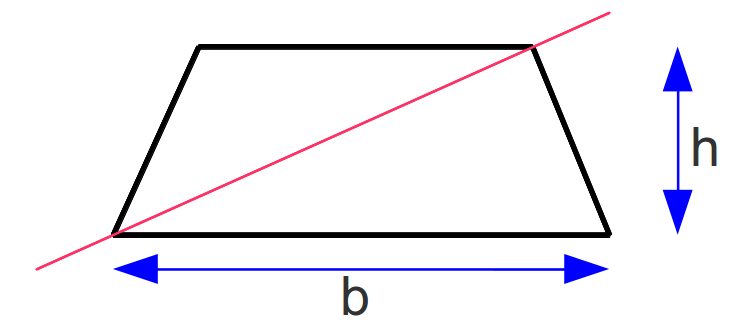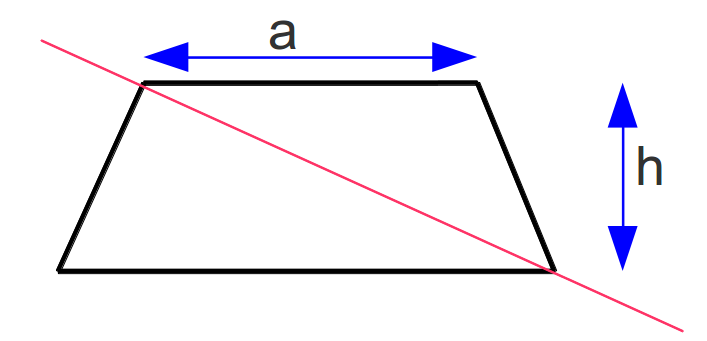
[ home ]
Images are large size here for use in presentation or projection onto whiteboard for staff development discussions
When I teach the formulas for the areas of trapezium, parallelogram, triangle and so on, I like to provide a 'story' explaining where the formula comes from. These 'stories' are not proofs, just a way of getting from a rectangle to the shape that I'm talking about.

When explaining the formula for the area of a trapezium, I link the (a + b) /2 term with the idea of a mean length for the trapezium. I usually draw something like the diagram above. Most students seem to follow the logic, especially if I use a trapezium drawn on a square grid on the (interactive) whiteboard. I like the way this argument makes a link between the idea of the mean of two numbers and the view of a trapezium as a rectangle with two parallel sides 'shrunk' and 'stretched' a bit (the 'edit points' function on most interactive whiteboard software makes this easy to show if you start with a rectangle).
Recently, a student suggested a new way of telling the trapezium area story.
Karl (names changed to protect the innocent), when faced with actually working out the area of a trapezium, drew this diagram...

...and reasoned out the area as two triangles worth. He was unable to complete the problem that way and fell back on the formula. Here is the full logic...



I quite like this use of triangles as it links to factorisation of simple algebraic expressions to form the 'traditional' trapezium formula, and the factorisation links in a natural way to a visual partitioning of the trapezium itself into two triangles.
Neither of these stories or explanations be called any kind of 'proof', but I find that explanatory stories like these help people to see where the formulas in the book come from. I'm using the 'two triangles' story in future because it flows from the area of a triangle easily, and because it makes links to algebra and factorisation. The teenagers want these stories, the adults seem more focussed on 'getting it done' and tend not to ask for the background story.
Keith Burnett, Last update: Sun Sep 04 2011